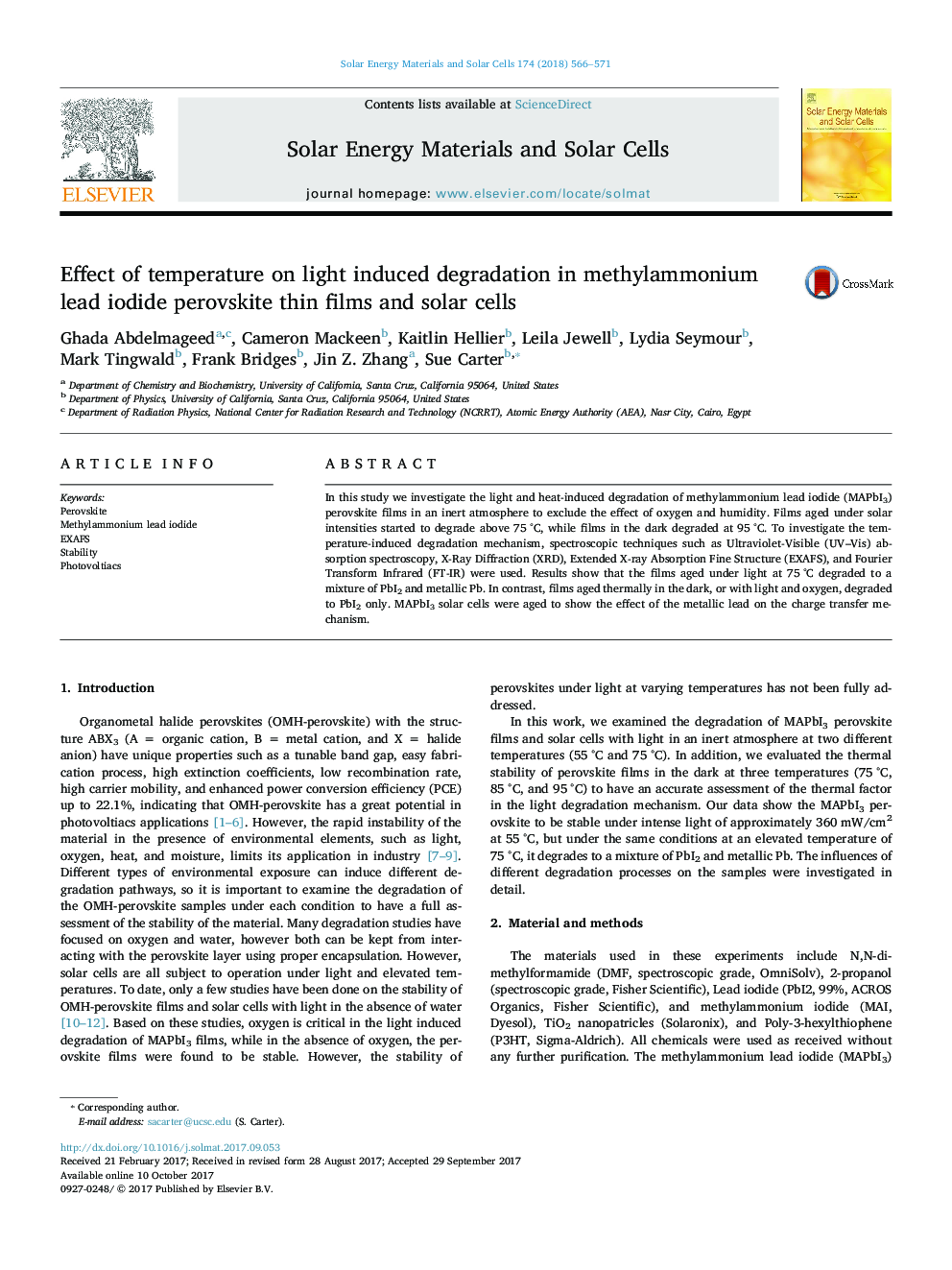| Article ID | Journal | Published Year | Pages | File Type |
|---|---|---|---|---|
| 6456751 | Solar Energy Materials and Solar Cells | 2018 | 6 Pages |
â¢Perovskite films and devices are stable under solar irradiation at temperatures below 75 °C in inert atmospheres.â¢Exposure to temperatures above 75 °C results in metallic lead formation in MAPbI3.â¢Metallic Pb makes the MAPbI3 more conductive, inducing shunts in the PV device.
In this study we investigate the light and heat-induced degradation of methylammonium lead iodide (MAPbI3) perovskite films in an inert atmosphere to exclude the effect of oxygen and humidity. Films aged under solar intensities started to degrade above 75 °C, while films in the dark degraded at 95 °C. To investigate the temperature-induced degradation mechanism, spectroscopic techniques such as Ultraviolet-Visible (UV-Vis) absorption spectroscopy, X-Ray Diffraction (XRD), Extended X-ray Absorption Fine Structure (EXAFS), and Fourier Transform Infrared (FT-IR) were used. Results show that the films aged under light at 75 °C degraded to a mixture of PbI2 and metallic Pb. In contrast, films aged thermally in the dark, or with light and oxygen, degraded to PbI2 only. MAPbI3 solar cells were aged to show the effect of the metallic lead on the charge transfer mechanism.
